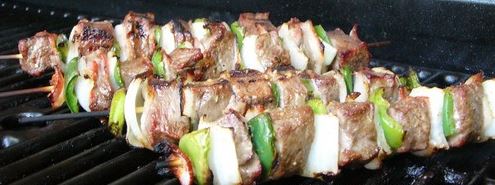The disease known as White-nose syndrome (WNS) may soon plague bats in Texas, according to the latest research. The fungus that causes deadly white-nose syndrome in hibernating bats has been detected in Texas for the first time. The syndrome has killed millions of bats in the eastern parts of North America, raising national concern.
A coalition of groups in Texas is continuing work to monitor the spread of the problem and is seeking willing landowners who could help scientists locate and access bat caves.

The fungus was detected on species of hibernating bats in 6 North Texas Counties: Childress, Collingsworth, Cottle, Hardeman, King, and Scurry. The three species are tri-colored bat, cave myotis, and Townsend’s big-eared bat. This is the first detection of the fungus on both cave myotis and Townsend’s big-eared bats. The Townsend’s big-eared bat has an isolated subspecies in the East, the Virginia Big Eared Bat that has already tested positive for the fungus.
Sampling for WNS in Bats
Samples were collected between Jan. 11 and Feb. 22 by biologists from Bat Conservation International (BCI) and Texas A&M University’s (TAMU) Department of Wildlife and Fisheries Sciences and Institute of Renewable Natural Resources, and analyzed as part of a National Science Foundation-funded project led by University of California at Santa Cruz. Surveys of sites in seven other counties in 2017 did not detect the fungus — those counties are Coryell, Freestone, Leon, Panola, San Saba, Shelby, and Wheeler.
White-nose syndrome is caused by the fungus Pseudogymnoascus destructans (Pd) and is responsible for the deaths of millions bats in the United States and Canada. It has been expanding in all directions since its discovery in New York in 2007. In some states, there have been declines in winter bat numbers of greater than 90 percent.
“There is still hope for bats in Texas,” said Jonah Evans, Texas Parks and Wildlife Department state mammologist. “The fungus thrives in colder climates and it remains to be seen if WNS will have the same serious impacts in Texas as it has in northern states. Additionally, 20 of the 32 species of bats in Texas do not regularly hibernate and we are hopeful they will not suffer significant population declines. We will continue working with cooperating landowners and researchers to implement the best management tools available to conserve these species.”
Bats play an important role in the ecosystem by consuming large numbers of insects. Recent studies have shown that the agricultural value of insect control by bats is $1.4 billion annually in Texas alone. This value includes reduced crop loss to insect pests, reduced spread of crop diseases, and reduced need for pesticide application.
White-nose Syndrome
White-nose syndrome does not infect humans and is only known to affect hibernating bats. The fungus thrives in cold, humid environments and invades the skin of bats, disrupting their hibernation and depleting their fat stores. Migratory Mexican free-tailed bats, which roost in the millions at popular sites such as Bracken Bat Cave, the Congress Avenue Bridge in Austin, and Old Tunnel State Park, do not hibernate for long periods during the winter, and are not expected to be at high risk for the disease. Although there is no known cure for white-nose syndrome, wildlife disease experts are actively working on several treatments to help improve survival.
Today’s announcement of Pd in Texas brings the total number of states with the fungus to 33. Of those states, 30 have been confirmed with white-nose syndrome.
“This discovery is significant because it occurs where the ranges of eastern, southern, and western bat species intersect, and two of these bats have extensive distributions in Central America and the West – beyond the current range of the disease,” said Jeremy Coleman, national white-nose syndrome coordinator for the U.S. Fish and Wildlife Service, who leads a coalition of more than 100 state, federal, and international governments agencies, academics, and non-governmental organization working to defeat white-nose syndrome. “While we don’t know how new species of western hibernating bats will respond to the fungus, we are concerned about this move into the West.”
WNS in Texas Bats
While scientists are disappointed by the detection of Pd in Texas, its arrival is not unexpected. The fungus was detected in Oklahoma in 2015 and Arkansas in 2014. Texas Parks and Wildlife Department (TPWD) has closely coordinated with state and federal agencies as the fungus has spread toward the state. TPWD has worked with BCI to monitor Panhandle caves for the disease since 2011 and in 2015 TPWD funded a statewide project through TAMU aimed at early detection of the disease and describing bat populations before white-nose syndrome arrives.
Nationally, Coleman said the partners in the international response are working to develop tools to manage WNS and improve bat survival. Management solutions are in development to slow the spread of Pd to unaffected areas, improve the survival of bats in newly affected areas, and promote recovery of populations decimated by WNS. Treatment options that could be deployed in some affected areas in the future are also a research focus of the international response team.
TPWD is working with researchers at TAMU to survey caves with hibernating bats. They are asking for willing landowners for help locating and accessing bat winter roosts and caves for tracking the spread of the fungus. Those with knowledge of such sites are asked to contact TPWD at 512-389-4505.
Wildlife experts say cavers and landowners with caves can help prevent human assisted spread of the fungus by requiring cave visitors to abide by the decontamination protocols described here. More information concerning white-nose syndrome can be found online.












